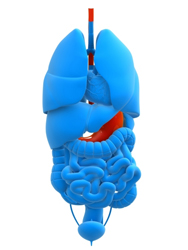Bio-engineered pancreas
Almost 80 million people worldwide suffer from type I diabetes, the insulin insufficiency disorder that results in increased glucose levels in the blood. Standard treatment consists of daily injections of insulin which however fails to reproduce the physiological secretion essential to maintain the glycaemia balance. Aiming to address this issue, the EU-funded ‘Development of a bioartificial pancreas for type I diabetes therapy’ (BARP+) project researched towards the development of a new prototype of a bioartificial pancreas suitable for encapsulation of insulin-secreting tissue and for implantation into patients. As a first step, project partners established a protocol for assembling cells into pancreatic pseudo-islets in vitro in a specially designed chamber. These insulin-secreting pseudo-islets exhibited functional characteristics superior to those of single cells and were accommodated into a bioartificial pancreas device. The islet function in the BARP+ device was tested in vivo and implanted animals maintained physiological blood glucose levels for up to three days after implantation. However, islets were damaged a few days later indicating the requirement for better materials to support encapsulation in the device. A series of experiments were subsequently performed to create the optimal environment for islet encapsulation. The use of fluorocarbons enhanced islet cell viability by prohibiting cell aggregation. Additionally, optimisation of the permeability of the device membrane and the materials of the frame, as well as the construction of multi-layered membranes led to the construction of many prototypes. The BARP+ device, yet to be tested in the clinic, demonstrated a promising approach for providing insulin-secreting islets in an encapsulated supportive environment. Importantly, the immune protection offered to the islets prohibits rejection which is the most common side-effect of islet implantation.

